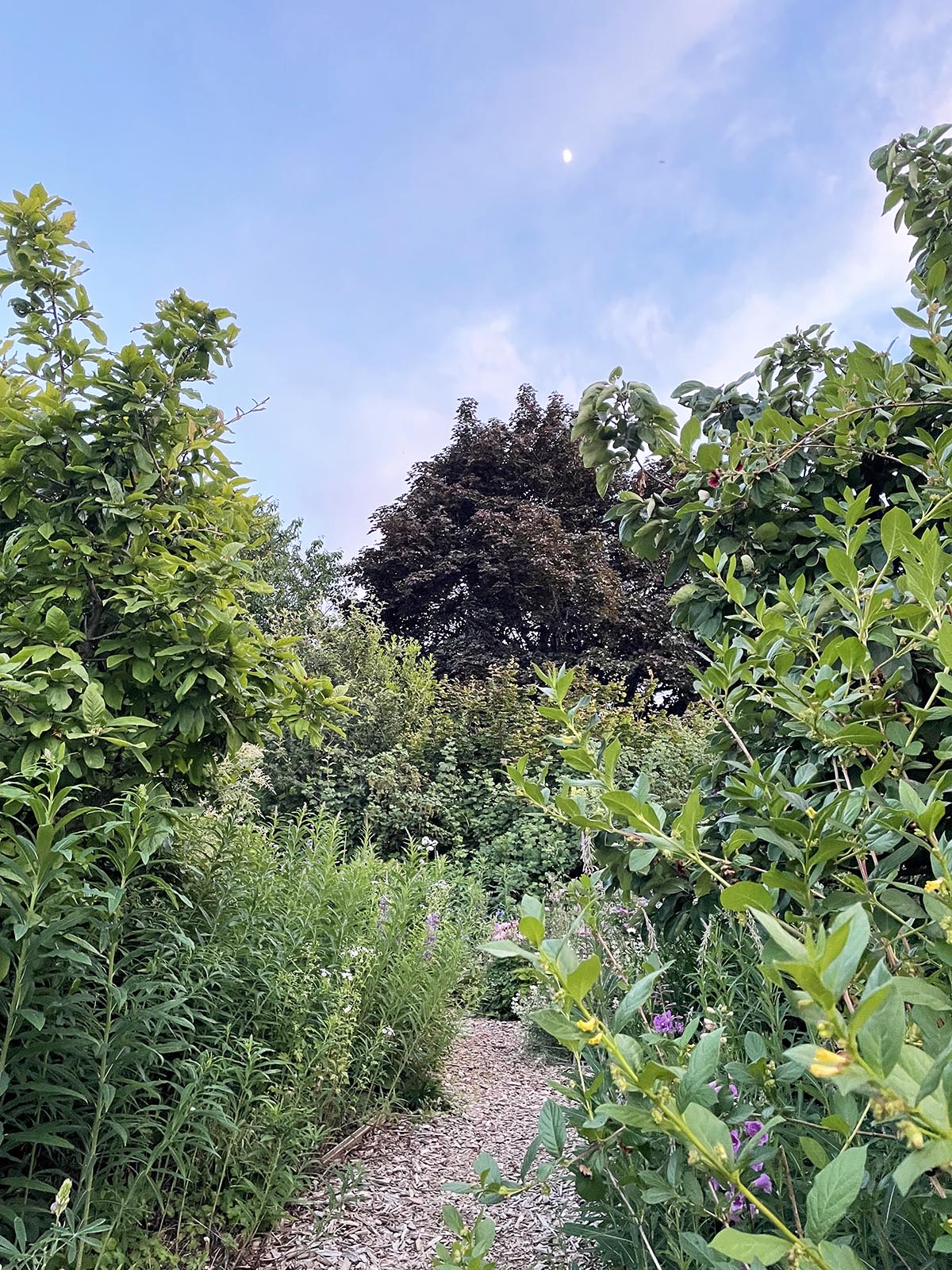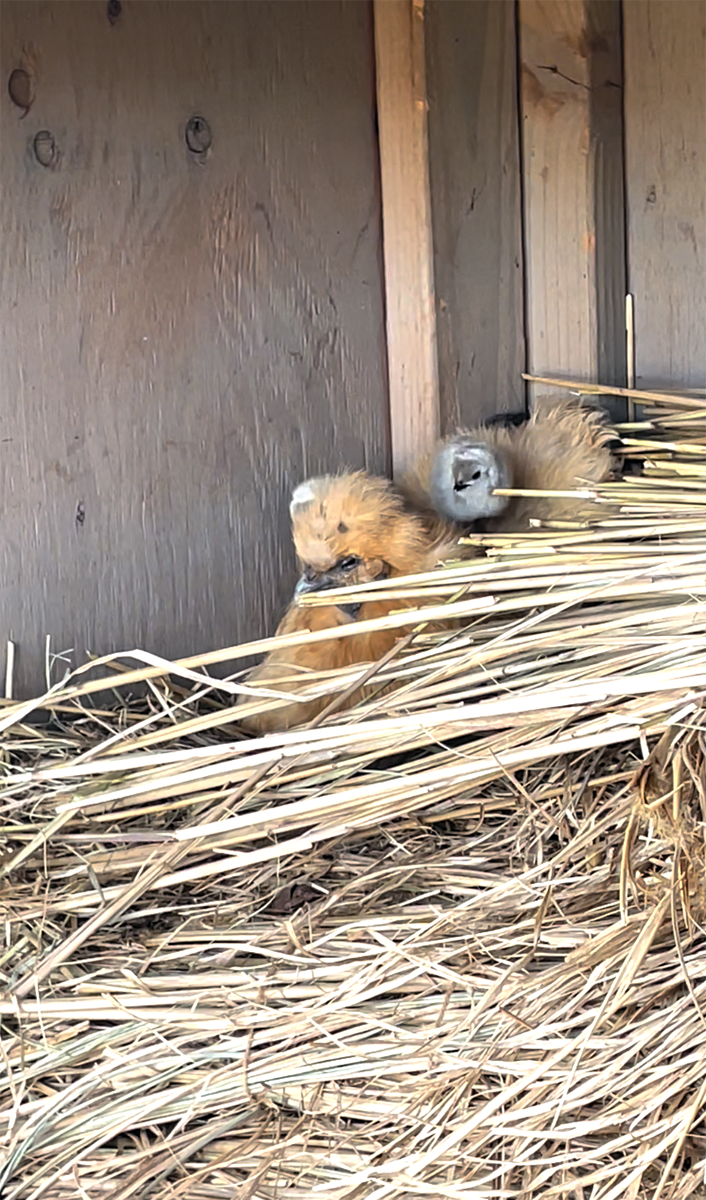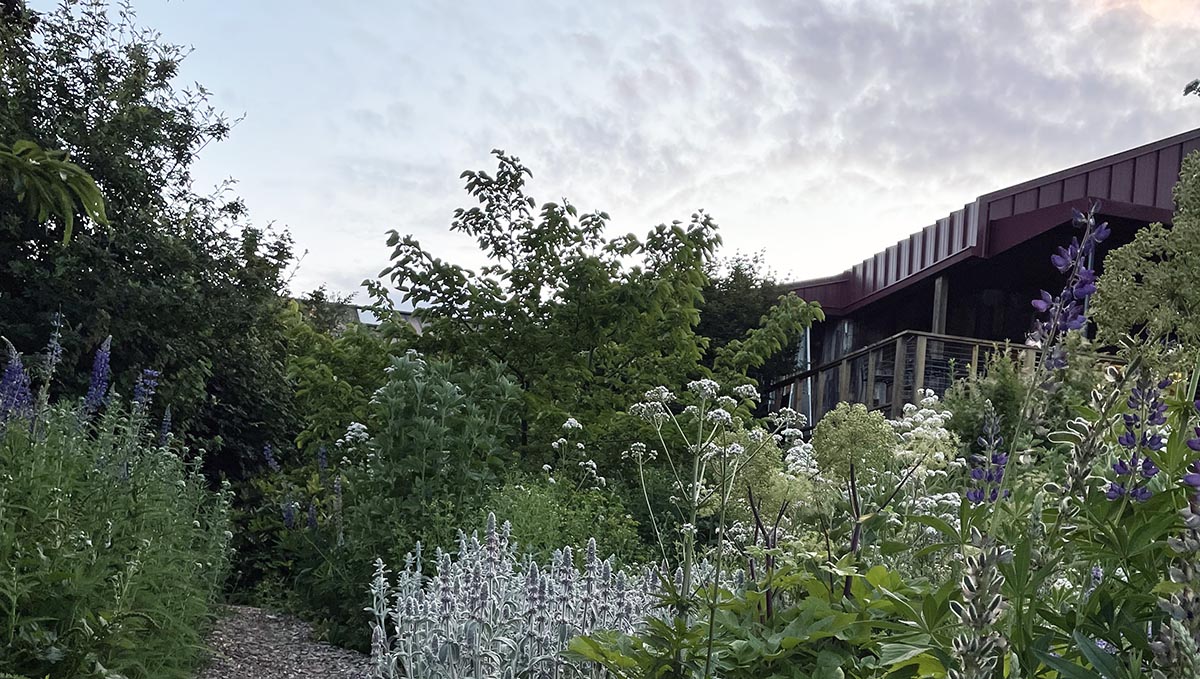“We live in such a time now, when our collective actions over the next several years will decide whether earthly life will continue its descent into ecological ruin and death or flourish in beauty and diversity.” -Lyanda Lynn Haupt, Crow Planet: Essential Wisdom from the Urban Wilderness
It’s not often that I walk the garden in the afternoon golden hour. I get to work as the sun rises and, because of this, know how light plays on each section of the garden during the dawn hour. Like most farmers, I work early before the scorching stare of the afternoon sun makes itself present. Today is different from my normal routine. I’ve chosen to linger into the late evening, and as the sun slowly sets beyond the hill, a golden glow is cast onto the garden. It lends a dramatic setting, and so I give in to the feeling and walk the paths of the garden, brushing my hands through the foliage in reverence of the rising moon.
I came to the garden late tonight to sneak baby chicks under a brooding hen. I do this at night, when the mother hen is disoriented. It is under the veil of night that my hand can push three small baby chicks under the hen, who believes she hatched them herself. This allows the hen to raise the chicks without my need for constant supervision. With this task done, I find myself drawn to the pearl border in the garden. This section ofthe garden is planted with white blooming, night blooming, and silver foliage plants and thus is called the pearl border, a type of moth garden that encourages night flying insects. Most people don’t know that this section really comes alive at night, when evening primrose and tobacco open their petals and the silver leaves of wormwood and lamb’s ear reflect the moon’s light, inviting in night pollinating insects, especially those of the lepidoptera family.


There is a growing awareness of the importance of providing habitat and food for pollinators whose dwindling numbers have us all worried about future food security. However, even more worrisome is the overall loss in numbers of invertebrates, a loss that many scientists are calling the sixth mass extinction. We need to remember the pollinators in our gardens, yes, but we also need to look at the entire ecosystem, planting for all invertebrates in our gardens. I have chosen to do this by planting natives and including night-pollinating plants.
A moth garden can be made up of all kinds of plants, ideally natives, that are planted for caterpillars and moths that visit the flowers. This must be synchronized with care to reduce light pollution in our gardens. Light attracts the very moths we are inviting into our garden, and can wreak havoc on moth populations by causing their death from exhaustion, predation, or by burning them up in the light. In fact, all kinds of living organisms are affected by the lights in our gardens, including ourselves. Standing out in the garden tonight, I can see light seeping in from other homes and from the street lamp that insists on its incandescent sputtering. Frogs croak in the pond, and crickets sing their chorus. I hope there are bats zooming about and moths too. I stand still in the midst of this nightlife, knowing that I can do this small thing, I can right this small corner of the world. I can turn off my lights, shut my drapes, and tend these diverse garden spaces. What if we all strived to do even this bit?
– With Love from the Garden
Shannon
Farm to Table
Our tasting room menu this month features fresh herbs and mixed greens.
